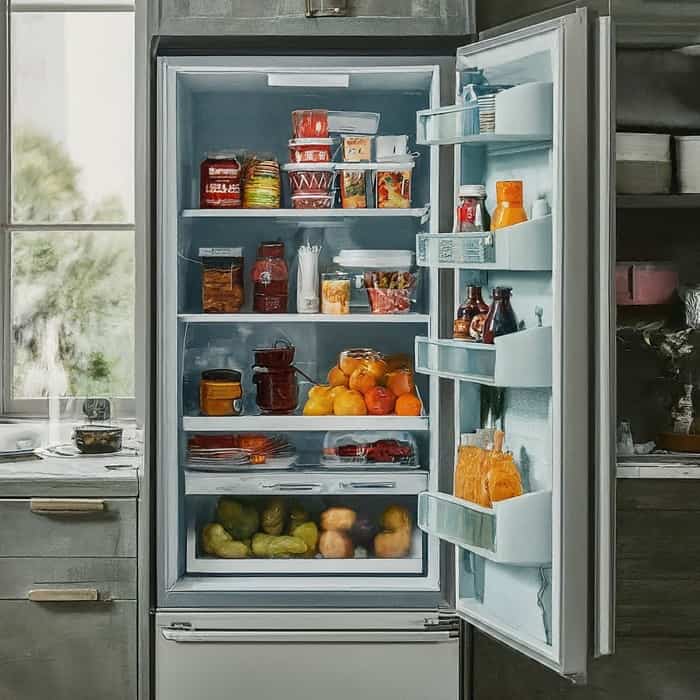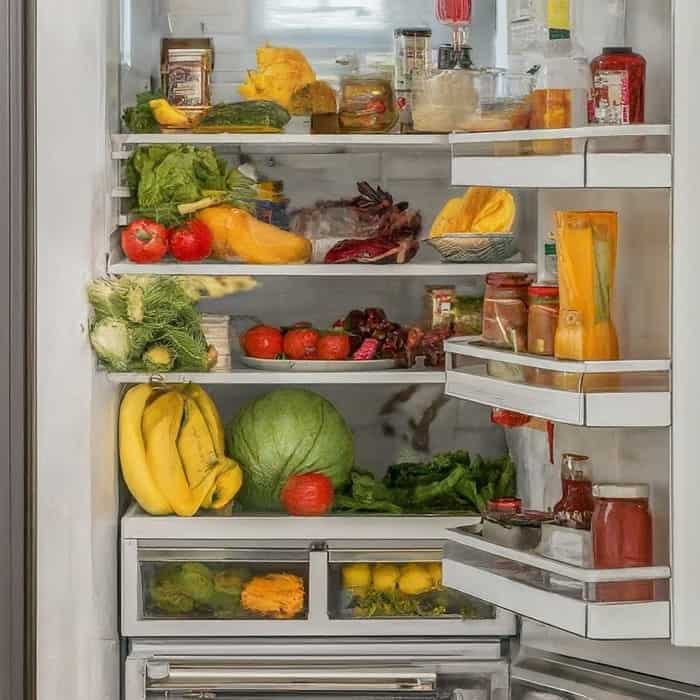Imagine moving to a new home or heading out for a long-awaited vacation. As you unplug it and prepare for the move, a question arises: How long will it take for the refrigerator to get cold once it’s plugged back in?
Understanding this process can help us manage our food storage better and avoid potential food spoilage.
The cooling time of a refrigerator depends on the specific type and brand you’re dealing with.
With the diverse range of refrigerators available, it’s essential to understand the differences in their cooling times.
- Mini Fridge: Typically, a mini fridge won’t take more than 4 hours to cool down, but the exact time can vary based on the brand and model.
- Top-Freezer Fridge: The cooling time generally falls within the range of 4 to 24 hours for a top-freezer fridge. Again, the specific brand and model will play a role in determining the exact duration.
- French Door Fridge: A French door fridge, known for its elegant design and convenience, usually takes 2 to 24 hours to cool down after being plugged in. However, this timeframe can differ based on your brand and model.
- Side-by-Side Fridge: If you own a side-by-side fridge, you can expect a cooling time of around 2 to 24 hours. This, of course, depends on the brand and model you’re working with.
- Bottom Freezer Fridge: Lastly, a bottom freezer fridge typically requires a cooling time of approximately 2 to 24 hours. This timeframe can vary depending on the specific brand and model.
It’s important to note that these are general estimates, and the cooling times can fluctuate based on the efficiency and design of each refrigerator brand.
Therefore, it’s advisable to consult the manufacturer’s guidelines for your specific fridge to better understand its cooling time.
Understanding the Refrigerator Cooling Process: How does a refrigerator cooling system work
To understand how long it takes for a refrigerator to get cold after being unplugged, we need to grasp the basics of its cooling mechanism.
Refrigerators work on the principle of heat exchange, where they remove heat from the interior compartments to maintain cool temperatures.
The cooling process involves a complex interplay of components such as the compressor, condenser, evaporator, and refrigerant.
When you unplug your refrigerator, you interrupt this intricate heat transfer system.
The compressor, responsible for compressing the refrigerant and circulating it through the system, ceases to function.
As a result, the temperature inside the refrigerator begins to rise gradually.
Read More: Stop A Fridge From Smelling When Turned Off
Factors that Impact How Long It Takes for A Refrigerator to Get Cold After Being Unplugged
1. Type and Size of the Refrigerator
Larger refrigerators with more internal volume naturally take longer to cool down than smaller ones.
Additionally, whether a single-door, double-door, or side-by-side configuration, the type of refrigerator can influence cool-down times.
2. Temperature Settings
The initial temperature inside the refrigerator before it was unplugged also affects the cool-down time.
A refrigerator set to a lower temperature will take longer to warm up than one set to a higher temperature.
3. Ambient Room Temperature
The ambient temperature of the room where the refrigerator is located plays a significant role.
In hotter climates, the refrigerator may warm up more quickly; in cooler environments, the cooldown process might be faster.
4. Amount of Food and Items Inside
The amount of food and items stored in the refrigerator can impact the cool-down time.
A fully stocked refrigerator retains cold temperatures better than one with fewer items, as the mass of stored items helps to maintain cooler conditions for a longer duration.
5. Efficiency of Insulation
The quality and efficiency of insulation in the refrigerator also influence how quickly it loses cold temperatures once unplugged.
Modern refrigerators with better insulation tend to retain coldness for more extended periods.
6. Initial Temperature and Contents
The initial temperature of the refrigerator and the contents inside also affect the cooling time.
If the refrigerator were at room temperature before being unplugged, it would take longer to cool down compared to a fridge that was already cold.
Similarly, a fridge filled with warm or room-temperature items will take longer to cool down than an empty one.
7. Storage location
The location where you store your refrigerator affects its cooling time. Placing it in a garage may prolong the cooling process due to higher ambient temperatures.
To optimize cooling efficiency, keep your home’s temperature cooler when installing the fridge in your kitchen.
This creates a more favorable environment for efficient cooling and helps the refrigerator reach optimal conditions faster.
Storage location and indoor temperature contribute to a smoother and faster cooling experience.
Read More The Best Quiet Mini-Fridges
How Long a Refrigerator Takes to Cool & How to Make It Faster

1. Keep the Fridge a Few Inches off the Wall
Ensure that the refrigerator is not placed directly against the wall.
It’s essential to allow space for the heat generated by the fridge to dissipate effectively.
If the refrigerator is in contact with the wall, it restricts the heat’s ability to escape, hindering the cooling process.
2. Put Ice in the Freezer
Adding ice to the freezer can help expedite the cooling process.
The ice releases colder temperatures, aiding in cooling down the fridge more quickly.
3. Keep the Door Closed
To maintain optimal cooling efficiency, it is crucial to keep the refrigerator doors closed as much as possible during the cooling period.
Opening the doors frequently allows cold air to escape, slowing the cooling process.
4. Cooling the kitchen
On hot and humid days, lower the temperature of your air conditioning system to create a cooler environment in the kitchen.
This is particularly beneficial when installing a new fridge, as it helps expedite the cooling process by providing a favorable ambient temperature.
5. Pre-cool the Contents
It is advisable to refrigerate all items before placing them in the fridge.
By adding already cold food to the refrigerator, you assist in speeding up the cooling process.
Avoid introducing warm food to an empty fridge with dry air, which can slow the cooling process and strain the refrigerator’s efficiency.
6. Organize Contents
Arrange the refrigerator’s contents strategically to promote better airflow and even cold air distribution once the cooling process resumes.
Conclusion How Long Does It Take for A Refrigerator to Get Cold After Being Unplugged
Patience is key when waiting for your refrigerator to regain its chill after being unplugged.
The time it takes for a refrigerator to get cold again depends on factors such as the size of the fridge, initial temperature, contents, and ambient room temperature.
On average, it can take anywhere from 4 to 24 hours for the refrigerator to cool down.
Understanding the process and following the tips mentioned can ensure a smoother transition and keep your food fresh and cool.
